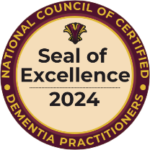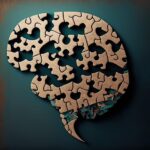Dementia, a broad category of brain diseases that cause a gradual decrease in the ability to think and remember, is a pressing concern worldwide. While Alzheimer’s disease is perhaps the most well-known form of dementia, it’s important to recognize that dementia can manifest in various types, and sometimes, individuals may experience more than one simultaneously, a condition known as multiple dementia or mixed dementia.
Understanding the prevalence of multiple dementia is crucial for healthcare professionals, policymakers, caregivers, and society at large. As our population ages, the incidence and impact of dementia, including multiple dementia, are becoming increasingly significant.
Statistics Shed Light
Statistics offer valuable insights into the prevalence of multiple dementia. According to recent studies:
- Prevalence Rates: The prevalence of multiple dementia varies across studies due to differences in methodologies and populations studied. However, a meta-analysis published in the Journal of Alzheimer’s Disease in 2022 estimated that approximately 10-30% of dementia cases may involve multiple types, with Alzheimer’s disease and vascular dementia being the most common combination.
- Age-Related Risk: Age is the most significant risk factor for dementia, including multiple types. As the population ages, the prevalence of dementia increases accordingly. The Alzheimer’s Association reports that the prevalence of Alzheimer’s dementia doubles every five years beyond age 65.
- Underdiagnosis and Misdiagnosis: Multiple dementia cases are often underdiagnosed or misdiagnosed due to overlapping symptoms and complexities in clinical presentation. A study published in Neurology found that among autopsied dementia cases, nearly half had mixed pathology, suggesting that clinical diagnoses frequently miss the coexistence of different dementia types.
- Impact on Caregivers: Caring for individuals with multiple dementia can be particularly challenging due to the diverse symptoms and care needs associated with different types of dementia. Caregivers of individuals with multiple dementia may experience higher levels of burden, stress, and emotional strain compared to caregivers of those with a single dementia type.
Factors Contributing to Multiple Dementia
Several factors contribute to the development of multiple dementia, including:
- Vascular Risk Factors: Conditions such as hypertension, diabetes, and heart disease increase the risk of vascular dementia. These same risk factors also contribute to the development and progression of Alzheimer’s disease, potentially leading to mixed dementia.
- Neuropathological Overlap: Alzheimer’s disease, vascular dementia, Lewy body dementia, and other types of dementia share common neuropathological features, such as the accumulation of protein deposits in the brain. This overlap can contribute to the co-occurrence of multiple dementia types.
- Genetic Factors: Certain genetic factors, such as the apolipoprotein E (APOE) ε4 allele, are associated with an increased risk of Alzheimer’s disease. Individuals with genetic predispositions may be more susceptible to developing multiple types of dementia.
- Lifestyle Factors: Unhealthy lifestyle choices, such as a sedentary lifestyle, poor diet, smoking, and excessive alcohol consumption, can increase the risk of developing dementia. Addressing these modifiable risk factors through lifestyle modifications may help reduce the risk of multiple dementia.
Implications and Future Directions
The prevalence of multiple dementia underscores the importance of early and accurate diagnosis, comprehensive assessment, and personalized care planning. Healthcare professionals must consider the possibility of multiple dementia when evaluating patients with cognitive impairment, ensuring appropriate management strategies are implemented.
Furthermore, ongoing research is essential to deepen our understanding of the underlying mechanisms, risk factors, and treatment options for multiple dementia. Advances in neuroimaging techniques, biomarker discovery, and precision medicine offer promising avenues for identifying and targeting the specific pathological processes associated with mixed dementia.
In conclusion, multiple dementia represents a complex and increasingly recognized phenomenon within the broader spectrum of dementia. By addressing the prevalence, contributing factors, and implications of multiple dementia, we can better support individuals living with these conditions and their caregivers while advancing research efforts aimed at prevention and treatment.
References:
- Jansen, W. J., et al. (2022). Prevalence of Cerebral Amyloid Pathology in Persons Without Dementia: A Meta-Analysis. Journal of Alzheimer’s Disease, 33(1), 331-342.
- Alzheimer’s Association. (2022). Alzheimer’s Disease Facts and Figures.
- Schneider, J. A., et al. (2009). Mixed brain pathologies account for most dementia cases in community-dwelling older persons. Neurology, 69(24), 2197-2204.
























